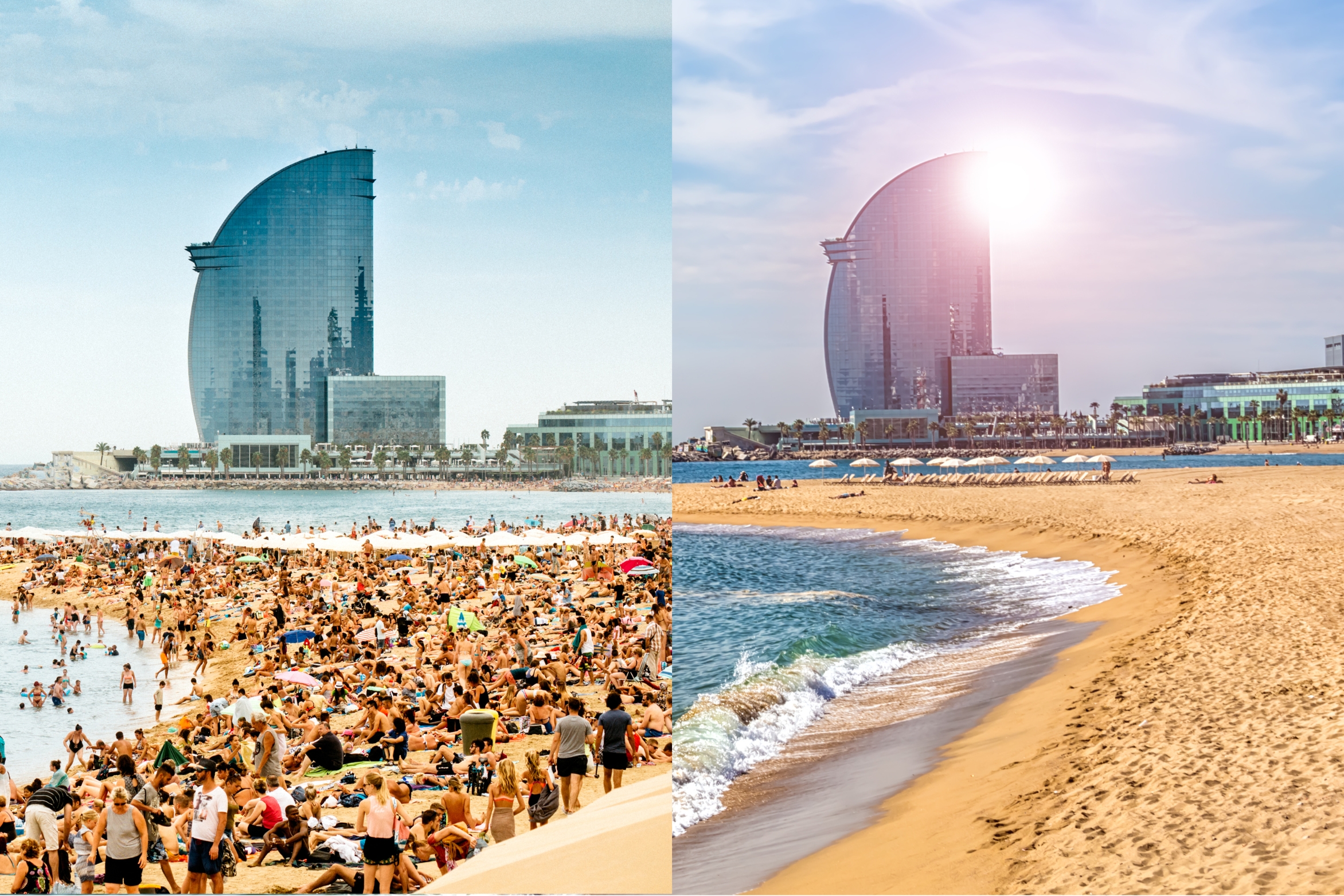INTRODUCTION
This is post the second part of a two-part interview with Ged Brown of Low Season Traveller.
In part one of our conversation, we talked about the key benefits and unique magic of traveling outside peak times, including how low season travel lets you experience destinations more authentically, with greater opportunities for genuine cultural exchange.
In this part, we discuss how the business Ged founded, Low Season Traveller, is pioneering a new approach in the travel industry by inspiring people to explore destinations during their quieter months.
Low Season Traveller is the world’s first company exclusively dedicated to promoting travel during non-peak seasons, which offer better value, more sustainable tourism, and authentic cultural experiences.
Low Season Traveller’s resources include:
- Month-by-Month Search Feature: Users can input their travel month to view an interactive map that shows which destinations are in low season during that period
- Temperature Gauge: Helps travelers assess climate in various destinations
- Podcast: Features expert insights on destinations and responsible travel during low seasons
- Low Season Traveller Magazine: Provides inspiring editorial content about low season travel experiences
- Blog: Informative articles highlighting the benefits of low season travel
- Videos and Photos: Visual content showcasing destinations during quieter times
- Booking Service: Personalized trip planning through their partner, Designer Travel
Q & A WITH GED BROWN OF
LOW SEASON TRAVELLER – PART TWO
Note: The following responses have been edited for brevity while preserving their original intent.
1. THE STORY BEHIND HOW LOW SEASON TRAVELLER WAS FOUNDED
I’d like to switch now from talking about low season travel in general to talking about your business, Low Season Traveller.
Can you tell us a little bit about what it does, and what inspired you to launch the company in 2018? And how you envisioned it making a difference in the travel industry?
So first of all, I’ve traveled all over the world during the low season months, and I’ve always found it better. Partly because I hate crowds and I hate stress. So I prefer destinations in the low season months, because they’re less crowded and less stressful.
And also, my main purpose for travel is not the weather. I travel to understand the culture and the people more than anything.
In 2018, we were coming on the back of another summer where overtourism was all over the news, and I was thinking about what the future would look like. Because I knew the projections of how tourism is going to grow very quickly.
And I figured if we’re going to welcome more tourists into the world, we can’t just keep cramming people into the peak season. We need to do it at a different time of the year.
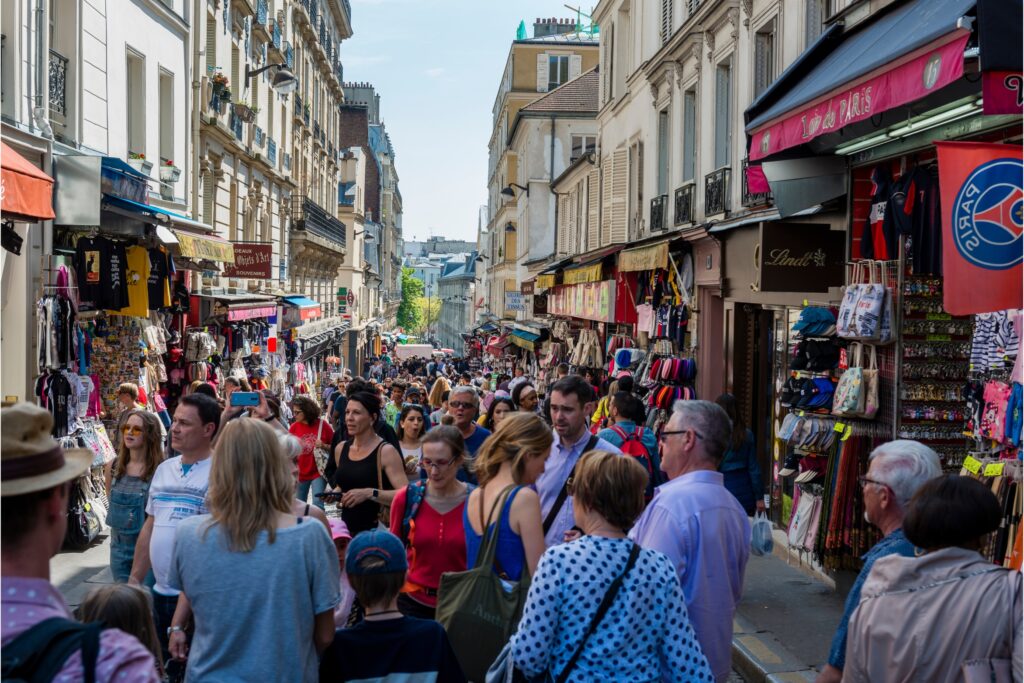
Then I thought, “Let’s say my starting point as a traveler is that I only want to travel during the low season months, and I’ve got, say, two weeks in August. My question is: where in the world is it low season in August?”
That was a question that I couldn’t get an answer to on Google.
So then I thought, “Okay, the travel industry’s got a million websites around the world. There must be an organization out there that just focuses on the low season months.”
And long story short, there wasn’t. There’s never been an organization before that only focuses on the low season months and the low season experience.
And that’s when I realized that it was probably the single biggest niche that’s been completely untapped in global tourism.
And secondly, it’s a niche that without a doubt is going to be popular over the next 20 years. As more and more tourists are crammed into the same destinations, they’re going to come back thinking, “You know what? Never again. I need to go in the low season.”
But where do you go to find good, unbiased, honest, objective information about the low season experience? There’s only one website in the world today to get that, and that’s Low Season Traveller. Still today, we’re the only resource in the world that only focuses on the low season experience.
Our role is not to be a tour operator or a travel agent. We just want to be a place where you can find unbiased information about what the low season experience is like.
We don’t want people to even consider peak season months. For example, let’s say you’re on Low Season Traveller to look into Mallorca or Cyprus. There’s a temperature gauge there, with the climate and the sunshine hours and all of that kind of stuff. But we block out the peak season months. We don’t want to show you the temperature for the peak season, because we want to encourage people to focus on the low season.
With Low Season Traveller, I’m kind of challenging people. I’m saying, “Look, if you just want to go to a destination and sit on the beach, have no involvement with the local community, and come back knowing nothing about the culture and history of where you’ve just been, you can. There’s ample opportunity to do that. And I’m not judging you.
However, if you‘re looking to get under the skin of a destination, then come with us. We’re going to show you something that none of your friends have done.
You know, in the 1950s, if somebody from Manchester, where I live, had been to Thailand, they would almost be a celebrity when they got back. Because very few people had traveled to Thailand.
Now, everyone’s been everywhere. So if you want to be an adventurer, if you want to be a pioneer, there’s nowhere that you can go that hasn’t already been touched by tourists and tourism.
And if there is somewhere that’s untouched by tourism, by the way, I hope it stays that way. But most places have been touched by tourism.
If you want to be an adventurer, go somewhere at a time of the year when very few people have experienced it. That’s being an adventurer. That’s being a pioneer. That’s trying to do something genuinely different and rewarding. And that’s what we’re trying to encourage people to do at Low Season Traveller.
2. LOW SEASON TRAVEL AS A RESPONSIBLE/ETHICAL CHOICE
How does Low Season Traveller actively promote responsible travel practices, and help travelers ensure that they’re contributing positively to the destination?
We want people to travel at the quiet times of the year, because they are not contributing to the overtourism of the peak seasons, which is a good thing. And we encourage people to travel for the culture and the heritage, we place a big emphasis on that. In our magazine, we have a big focus on cultural heritage in every single edition.
Cultural heritage travelers just naturally seem to tend to be more respectful. But in terms of helping travelers ensure they’re traveling responsibly, we need to do more on that, to be really honest.
We probably should make it more explicit and point people in the right direction. I just feel like our audience at the moment is respectful anyway, because they’re interested in the culture and the heritage.
The issue of sustainability, travel and tourism is very broad. I suppose the lane that we chose is the low season period as being more responsible than the high season.
We could get involved in talking about sustainable aviation fuel and alternatives to flying. But you can’t do everything. If you try to be everything to everyone, you’ll be nothing to nobody.
I take personal responsibility that, when I’m traveling, as the leader of the organization, I will often post about sustainable travel and tourism practices. And we’ve had features in the magazine about traveling responsibly. But I think there’s always room to do more.

3. GIVING BACK
Low Season Traveller donates to charities, right? Could you tell me a little about that?
We do. When you’re talking about sustainability, I think you have to be responsible as an employer, as a company, and as an organization. For me, it felt right that whenever low season travelers visit a destination, they should leave a positive legacy behind, and that we as an organization should try and help with that.
So we wanted to partner with destinations. We would say “Can you help us identify a small local charity to donate to?”
For example, in Valencia, there was one that we looked into that’s for old people who live on their own. And they bring them together to have a cup of coffee and a bit of a chat.
And I just thought, “For a big global NGO, our donation would be a drop in the bucket. But it means the world to a small local charity like this.”
But it’s also because if there’s a traveler who’s visiting Valencia, and they’ve worked with Low Season Traveller, hopefully knowing that we put money into these types of organizations helps that person feel reassured their tourism is having a positive impact.
4. HOW ATTITUDES TOWARDS LOW SEASON TRAVEL ARE CHANGING
Since founding Low Season Traveller, what changes have you seen around low season travel?
It’s grown significantly. In hindsight, when I set up Low Season Traveller, we were probably a bit early. Initially, it was a very lonely place, I can tell you. When I would speak to tourism destinations, they were interested, but they weren’t really seeing it.
Now the agenda has moved on significantly. There is a recognition that if we’re going to accommodate twice the number of tourists, we absolutely have to move into the low seasons. So it’s starting to be accepted.
There are still some destinations which aren’t there yet. But in general, the whole movement has grown massively. Now, when you speak to tourist boards, they have strategies for their low season months, which they never really had before.
With regards to the consumers, things are changing as well. I think the challenge is that it’s still not a mainstream concept.
I’d like to see more organizations, tour operators and travel agents talking up the low season. And not just talking about the fact that it’s cheaper during the low season.
That irritates me. Because what a lot of organizations do is they just say, “Come to Cyprus in January, it’s so much cheaper.”
But that’s not the message they should be emphasizing. The fact that it’s cheaper should be a happy byproduct. Don’t come because it’s cheaper. Come because it’s a better experience.
So I’m hoping that through what we’re doing at Low Season Traveller, we’re leading the way so that others can try to inspire people to travel in the low season, and not feel like they’re going because it’s the cheaper alternative.

5. OVERCOMING OBSTACLES IN PROMOTIONG LOW SEASON TRAVEL
What are some of the challenges you’ve had in promoting low season travel, and how have you dealt with them?
I think the biggest challenge is being a startup trying to affect change within a globally-integrated sector like the travel industry.
From the beginning, my ambition was to change travel and tourism, which is either audacious or really naive to even try.
First of all, you have to convince consumers to want to try this form of travel, and to influence consumers en masse is so expensive. There are 1.5 billion global travelers. It’s really hard to affect change within that number of people. You would need millions of pounds or dollars to be able to do that. So you can only really make a small start and hope that at some point it will gain momentum.
I started with the consumers, but in retrospect I should have started with the travel industry. I moved on to the industry later, with the Tourism Seasonality Summit, where the leaders from airlines, airports, tourism destinations, tour operators, and hoteliers all get together to compare and contrast strategies for extending seasonality. It’s easier to get through to the travel industry, because it’s a much smaller community.
But I do think it’s right to try and affect change on both the industry level and the travelers’ level.
So that’s what we tried to do. And it’s starting to get there. But the challenge is, when you’re trying to introduce what is effectively a new form of travel, you’re a lone voice, and you don’t have pots of cash, it just takes an abundance of resilience. You just keep banging the same drum.
It’s not been easy. It’s been like moving a big rock up a hill. But then you start to see the brow of the hill up ahead. You know that once you get it up there, it’s going to start rolling by itself soon enough. And I think I can foresee where the brow of the hill is.
6. HOW TO MAKE THE MOST OF LOW SEASON TRAVELLER’S RESOURCES
You have quite a few resources available through Low Season Traveller: the website, the podcast, the magazine, etc.
Let’s say a traveler has just decided “Okay, I want to take my next trip during the low season.” And they’ve got you there to guide them through what resources are available on Low Season Traveller. How would you recommend they use those resources?
I would say the best tool we’ve got is actually disgracefully well-hidden on our website at the moment. We’re doing a big redesign on the website to try to bring out more of the features.
But the best starting point is: you click on the Destinations tab at the very top navigation, you get a map of the world. The months of the year run across on the top, and you click on the month when you want to travel.
Once you click, little pins light up all over the map, showing you where it’s low season that particular month.
And when you hover over each of the pins, it shows you the destination, for example Laos or Cambodia.
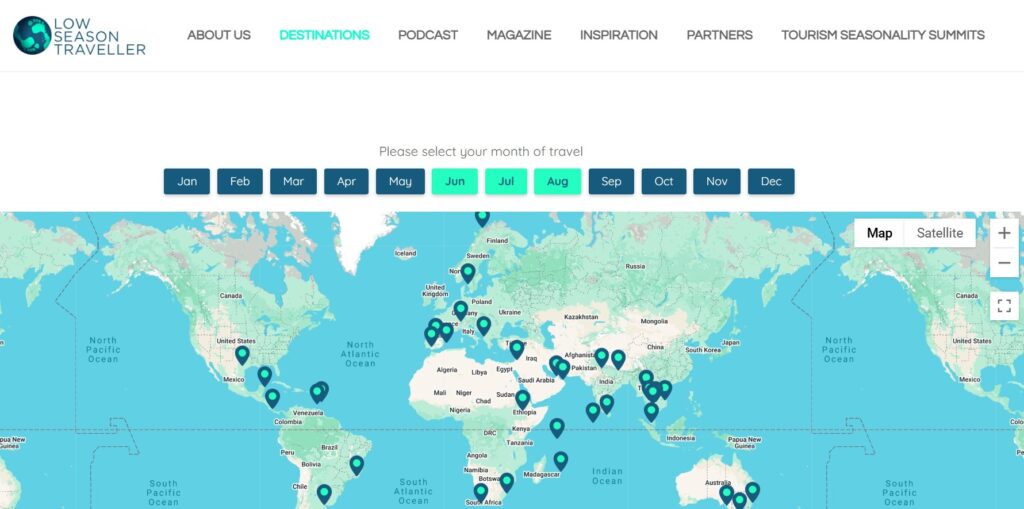
And then when you click on the pin, it tells you a little bit about what the low season experience is like in that particular month. It has insider tips, which we’ve gotten from local experts. It has information about food and drink. It talks about all the experiences that you can have in the low season and why it’s better than the high season.
And then for a lot of destinations, we have a link to the podcast as well, so that you can actually listen to a guide, usually the guide who gave us the information, about why they think it’s a wonderful destination.
I think that’s the coolest tool that we’ve got, and we don’t make enough of it. It should be on the homepage, but it’s kind of hidden away. But again, that kind of thing is the reason we’re doing a big redesign.
With the podcast, we’ve recorded about 250 episodes, and built up a listenership of just under 150,000 people around the world.
The idea with the podcast was that we would speak to local people in various destinations to find out what it’s like there in the low season.
I always used to ask “Is it an awful experience during the low season?” And their face would light up, they would get animated and say, “No, It’s amazing! That’s when the place comes alive, that’s when the real essence of our destination is to be found.”
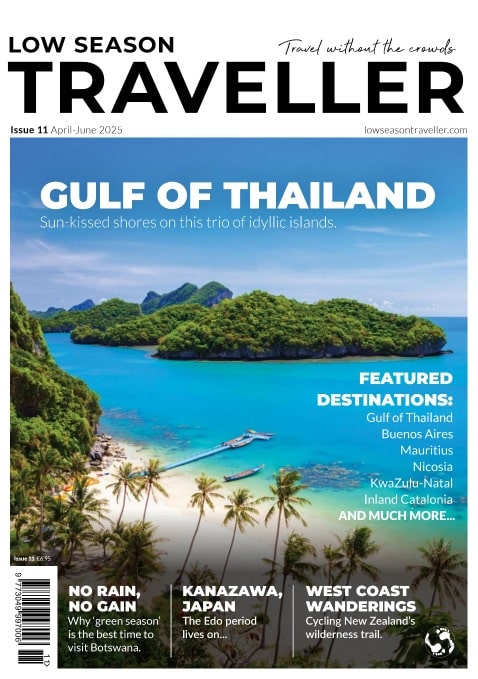
And I thought, “That’s what we need to get across.”
We also started to film in different locations, to show what the experience is like. So if you’re more visual, you can actually see the reality of the low season and as filmed by us.
And then we have our blog posts, and back issues of all of the magazines. We’ve had some amazing writers, and they’re all really passionate about traveling in the low seasons themselves.
So however anybody wants to learn about the low season, whether they’re a reader or a listener or a viewer, we’ve got something for you, to help you to uncover low seasons around the world.
7. WHAT’S AHEAD FOR LOW SEASON TRAVELLER: LEADING THE SHIFT AWAY FROM PEAK SEASONS
As travel trends shift more towards responsible and sustainable tourism in the coming years, what role do you see Low Season Traveller playing in helping advance that shift?
In terms of responsible tourism, our role will always be centered around the most important decision I think anybody can make, which is to travel in the low season months. Then you’re not contributing to overtourism. And overtourism is one of the most pressing issues that the travel industry is facing.
This summer, you are going to see people protesting in the streets around Europe and around other parts of the world because they feel like their hometown has been taken over by outsiders who don’t care.
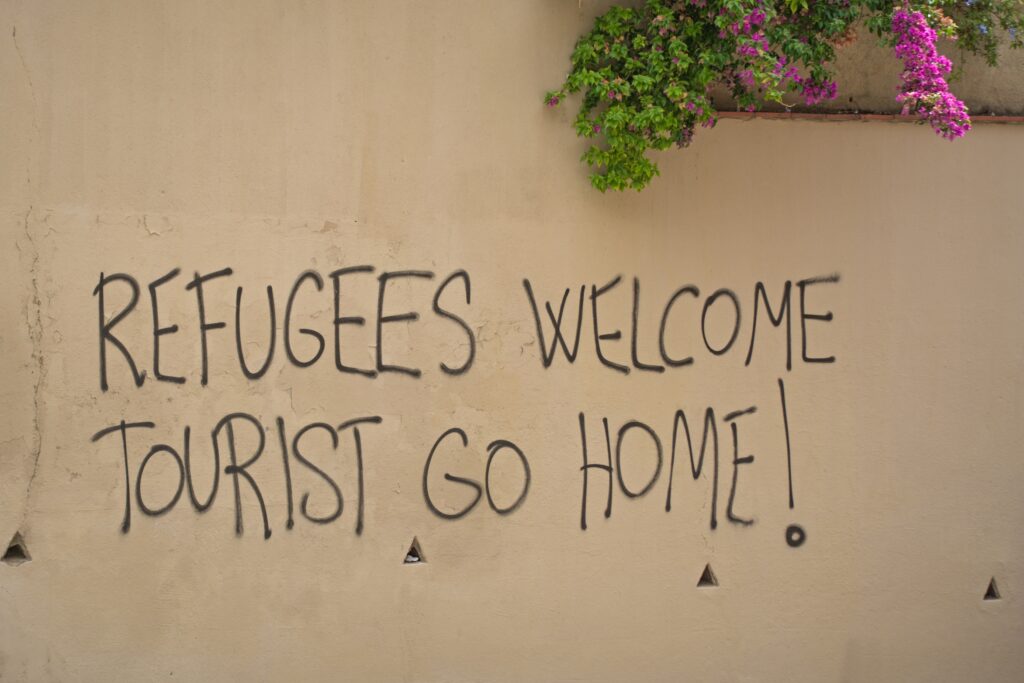
That to me, that’s why low season travel is so pressing. We’ve got to stop contributing to overtourism.
Of course there are other issues that are important as well. The climate crisis is obviously very, very pressing. But there are other companies out there which are focusing on that, and they do it really well.
Byway Travel, for example, which focuses on overland trips, is great. Cat Jones set that up, during COVID no less, and what she’s done is amazing.
One of the other issues I have with the travel industry, and I’ve been in this industry for decades, I’ve said it from day one: it has had a penchant for bending the truth for years.
Travel is one of the very few products where you don’t know what you’re getting at the time when you pay for it. You book your vacation, and you don’t know what the reality of that vacation is until you get there. Even though it’s probably the biggest expense you’ve got in the year, as long as you’re not buying a house or a car.
You part with that cash, and you’re not 100% certain what you’re going to get until you arrive at the destination.
Historically, what the travel industry has done is it’s shown you images of empty beaches, or Paris looking quiet.

When I set up Low Season Traveller, I thought a point of difference would be to have all of the images that we use on the website taken during the low season.
And of course, that was ridiculous. Because all of the other guys, who do 80% of their business in the high season, what do they have pictures of?
Not the high season. Of course not.
Why don’t they have pictures of the high season? When they’re promoting Barcelona on a travel website, why don’t they show a picture of the city in the peak season?
Because no one would want to go. No one’s going to look at an image of the throngs of tourists in the streets of a city during peak season and think, “I want to be in that picture.”
And yet, that’s what the travel industry has done. We’re trying to sell tourists something that doesn’t exist for the peak season months.
I think that’s disingenuous. I think it’s dishonest.
I realized very quickly that we need to start showing more photographs on Low Season Traveller of what the peak season looks like.
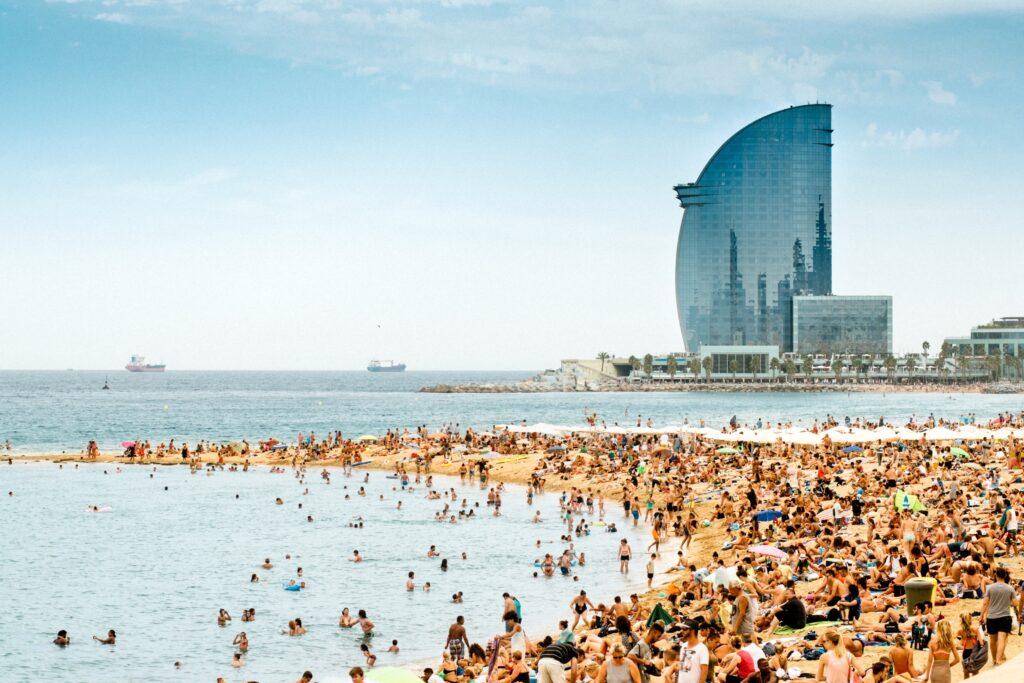
So that’s the weird thing: even though we focus on the low season, because no one else is sharing pictures of the peak season, we have to do more articles and blogs that showcase exactly how bad things are in the peak season. Because again, when you look at those photographs, all you’ll think is, “I definitely do not want to be there at the time of the year.”
It’s like that Robert Frost poem, The Road Not Taken. It’s about choosing the less-traveled path, rather than going down the road that everybody else goes down. Often, that’s the path you’ll find the most rewarding.
Click here to read part one of our interview with Ged Brown, where we examine:
- The Benefits of Low Season Travel: How low season travel offers affordability, a richer experience and a chance to support destinations when they need it most
- Common Misconceptions: The truth behind common concerns about low season travel, and why they shouldn’t hold you back.
- Caveats to Consider: Potential drawbacks, such as reduced services, and how to prepare for them.
And much more.
About Ged Brown:

Ged Brown is the founder and CEO of Low Season Traveller, an organization dedicated to promoting travel outside of the peak seasons.
With a deep belief in the benefits of quieter, less crowded travel experiences, Ged’s mission is to help people discover the advantages of visiting destinations at a time when most other travelers aren’t.
Through his work, he highlights the importance of combating overtourism, while encouraging travelers to embrace the unique charm of destinations during the low season.
Ged has over 30 years of experience in the travel industry, and has held senior roles at prominent companies like Thomas Cook, Travel Weekly, MyTravel, TUI and Kuoni.
He is a passionate advocate for sustainable tourism and serves on the management board of The World Tourism Association for Culture and Heritage. Ged frequently presents at industry events and writes about sustainable tourism practices, aiming to ensure that travel remains accessible and beneficial for future generations.


